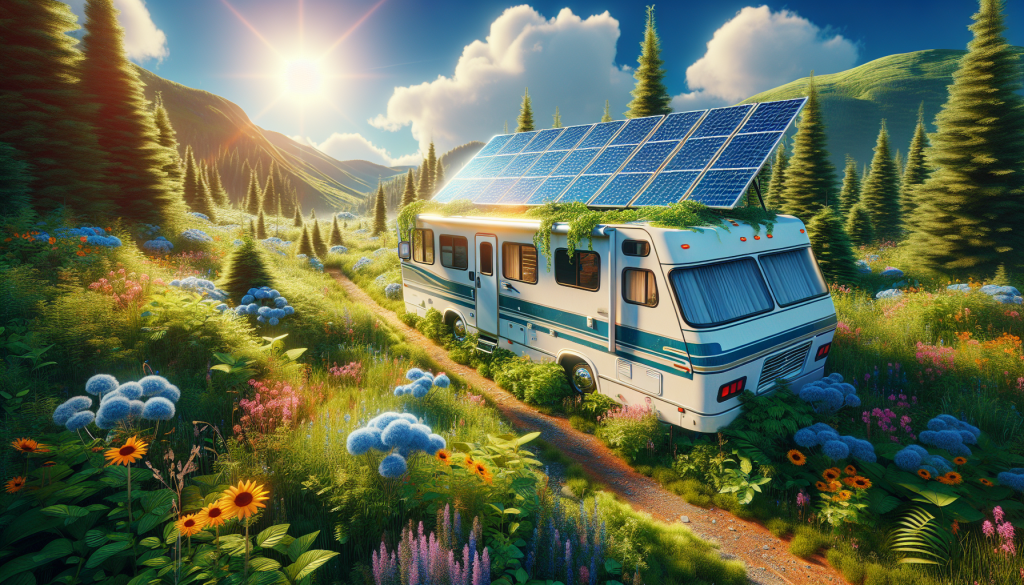
Embracing the freedom of the open road in your RV doesn’t mean you have to give up the comforts of home that rely on electricity. Solar panels are a sustainable and convenient way to keep the lights on without the constant need for a power hook-up or running a noisy generator. If you’re ready to harness the sun’s power for your on-the-go lifestyle, here’s a detailed, step-by-step guide to installing solar panels on your RV.
Assessing Your Solar Needs
Before you can enjoy the benefits of solar power, you need to understand your energy consumption. Make a list of all your electronic devices and appliances, noting their wattage and the amount of time they’re used each day. This will help determine the size of the solar system required. Remember, it’s better to overestimate your needs slightly than underestimate and find yourself without sufficient power.
Choosing Your Solar Panels
The two most common types of solar panels are monocrystalline and polycrystalline. Monocrystalline panels are more efficient but also more expensive, whereas polycrystalline panels offer a balance between cost and efficiency. When selecting solar panels, consider your RV’s roof size and the mounting system. Also, reflect upon the portability factor; if you park in shaded areas often, you might benefit from portable solar panels that can be moved to capture the sun.
Gathering Tools and Materials
Before starting the installation, collect all necessary tools, such as a drill, screwdriver, wrenches, and protective gear. You’ll also need materials such as proper gauge wiring, solar charge controller, mounting brackets, sealant, and possibly a solar inverter if you plan on powering AC appliances directly from your solar setup.
Installing Mounting Brackets
Carefully decide where you want to position your solar panels on the RV roof. Look for a flat surface that gets maximum sunlight throughout the day. Once you’ve chosen the location, install the mounting brackets, making sure they’re securely attached to the roof. Apply a sealant to prevent any water leaks.
Mounting the Solar Panels
After the brackets are in place, carefully lift the solar panels onto your RV’s roof and secure them to the brackets. Ensure they are tight and stable to withstand the vibrations and wind resistance that come with driving your RV on the road.
Wiring Your Solar Panels
Solar panels can be wired in series or parallel, depending on the required voltage and current. In a series setup, the voltage increases while the current stays the same, which is ideal for smaller wire sizes and longer distances. In a parallel setup, the current increases while the voltage remains constant, useful if you’re expanding your system in the future. Use stranded copper wire to connect the solar panel outputs to the charge controller, then from the controller to your RV’s battery system. Be mindful of the polarity; improper wiring can damage your solar components.
Connecting to a Charge Controller
The solar charge controller is a vital component as it regulates the electricity flowing from your panels to your batteries, avoiding overcharging and potential damage. Connect the charge controller between the solar panels and the batteries, following the manufacturer’s instructions carefully.
Final Connections and Testing
Bring your installation together by connecting the battery bank to the charge controller. If you’re using an inverter to convert DC power to AC, connect it to the battery bank following all safety protocols. Once all connections are secure, it’s time to test your solar setup. Monitor the solar charge controller and check that your panels are indeed charging your RV’s batteries.
Maintaining Your Solar Setup
Once your solar panel system is operational, maintenance is pretty straightforward. Keep the panels clean and free from debris to ensure optimal efficiency. Regularly check your connections, mounting brackets, and the condition of your batteries to ensure everything is functioning as it should.
By following these essential steps, you can successfully install solar panels on your RV and begin enjoying the independence and cost-savings that solar energy provides. With a little time and effort, you’ll be self-sufficient in your energy needs, able to go off-grid, and explore to your heart’s content with the power of the sun as your reliable travel companion.